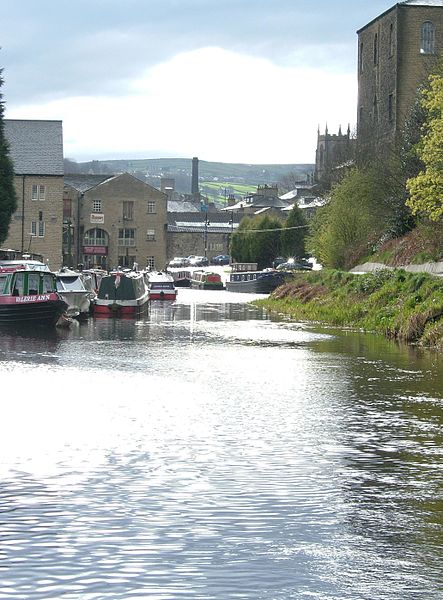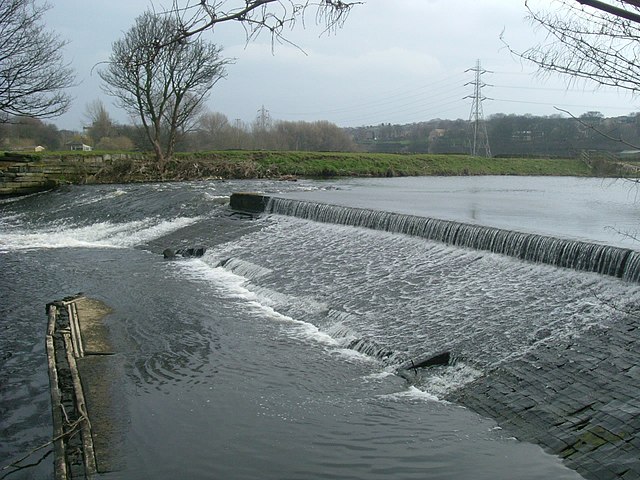Calder and Hebble Navigation
The Calder and Hebble Navigation is a broad inland waterway, with locks and bridge holes that are suitable for 14-foot-wide (4.3 m) boats, in West Yorkshire, England. Construction to improve the River Calder and the River Hebble began in 1759, and the initial scheme, which included 5.7 miles (9.2 km) of new cuts, was completed in 1770 and has remained navigable since it was opened. Significant improvements were made, including the Salterhebble branch to Halifax, opened in 1828, and ever-longer cuts to bypass river sections. Trade was assisted by the opening of the Rochdale Canal in 1804, which provided a through route from Sowerby Bridge to Manchester. There were plans to abandon the river sections completely in the 1830s, but these were modified as the needs of mill owners and other riparian landowners were recognised.
Looking towards the terminal basin of the Calder and Hebble Navigation, from a point near the junction with the Rochdale Canal
Anchor Pit Flood Gates protect the Kirklees Cut when river levels are high.
River Calder, West Yorkshire
The River Calder is a river in West Yorkshire, in Northern England.
View of the Calder Valley west of Hebden Bridge
Example of a weir on the river




